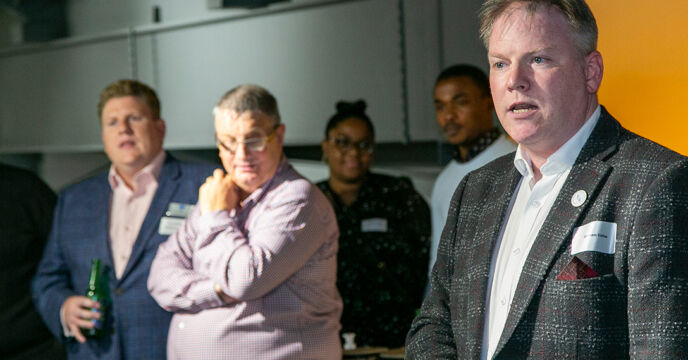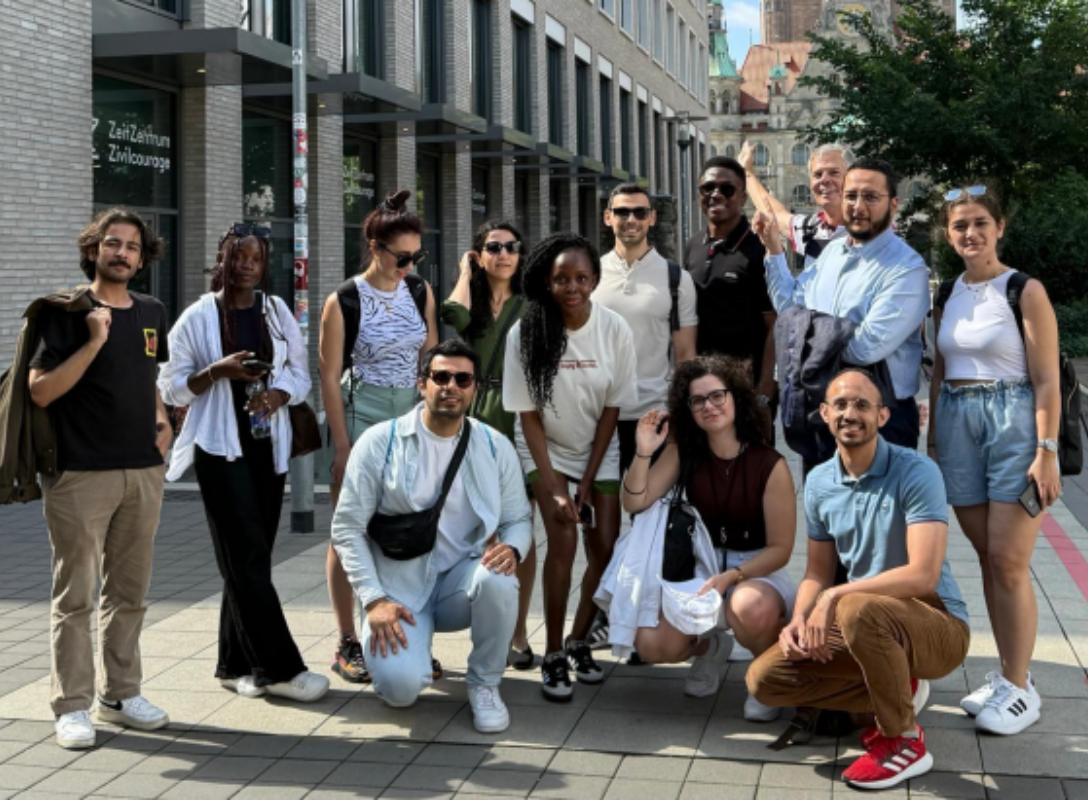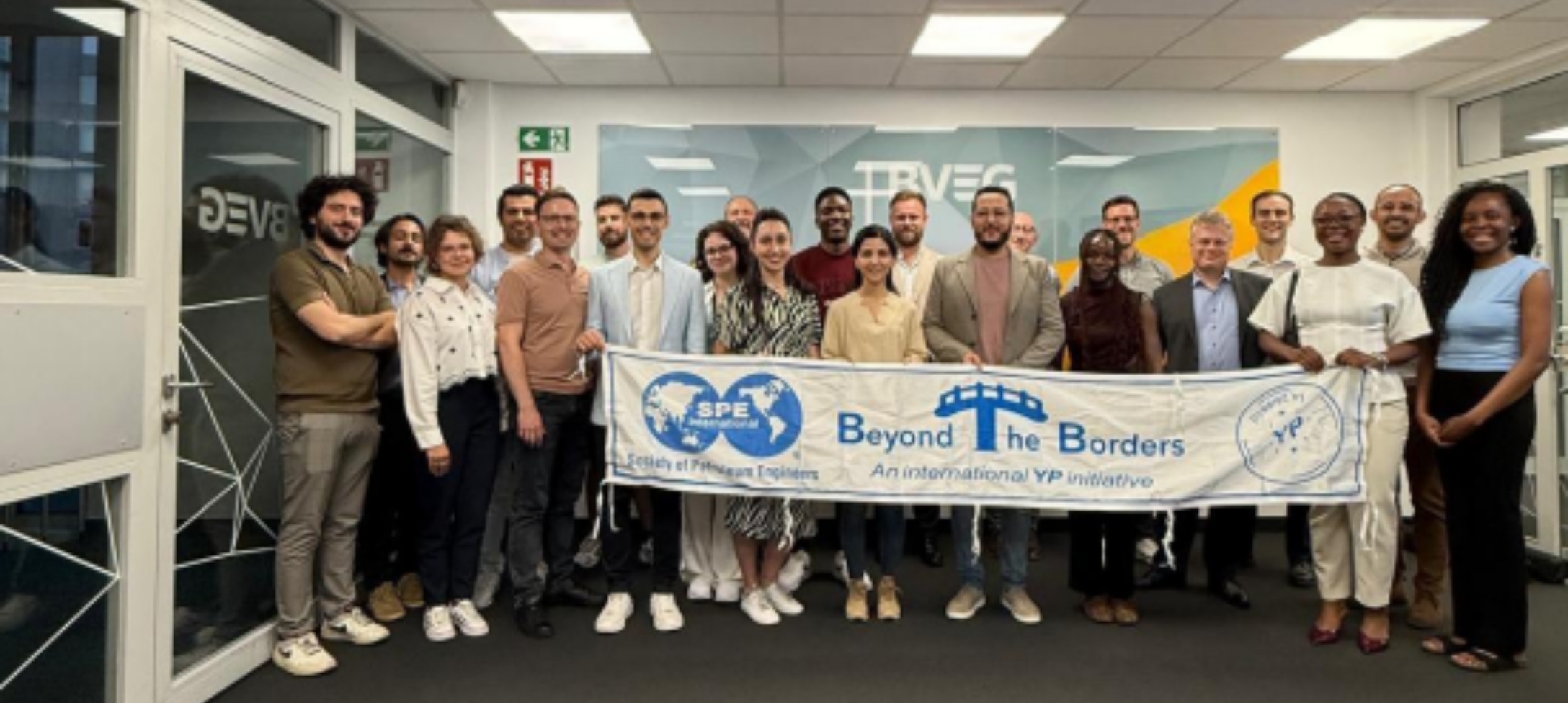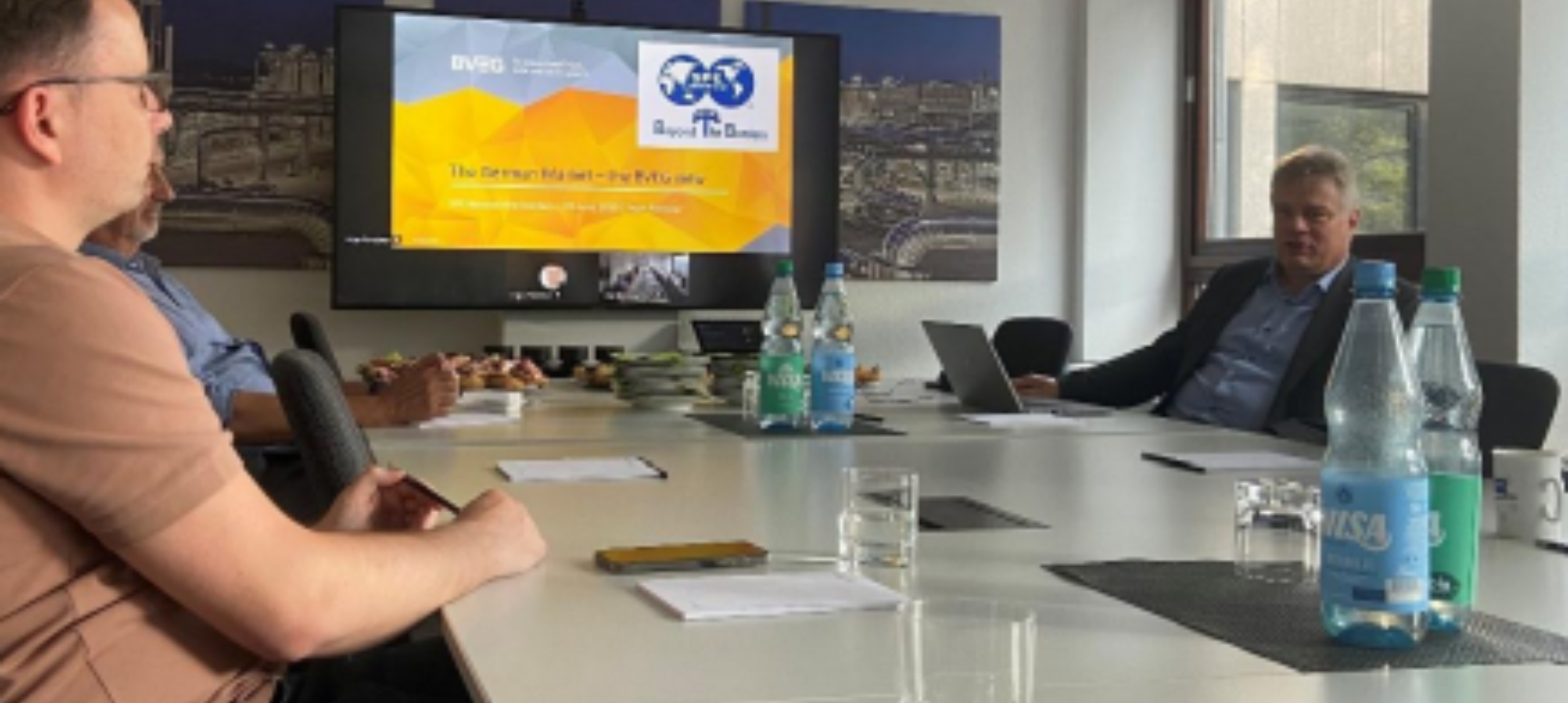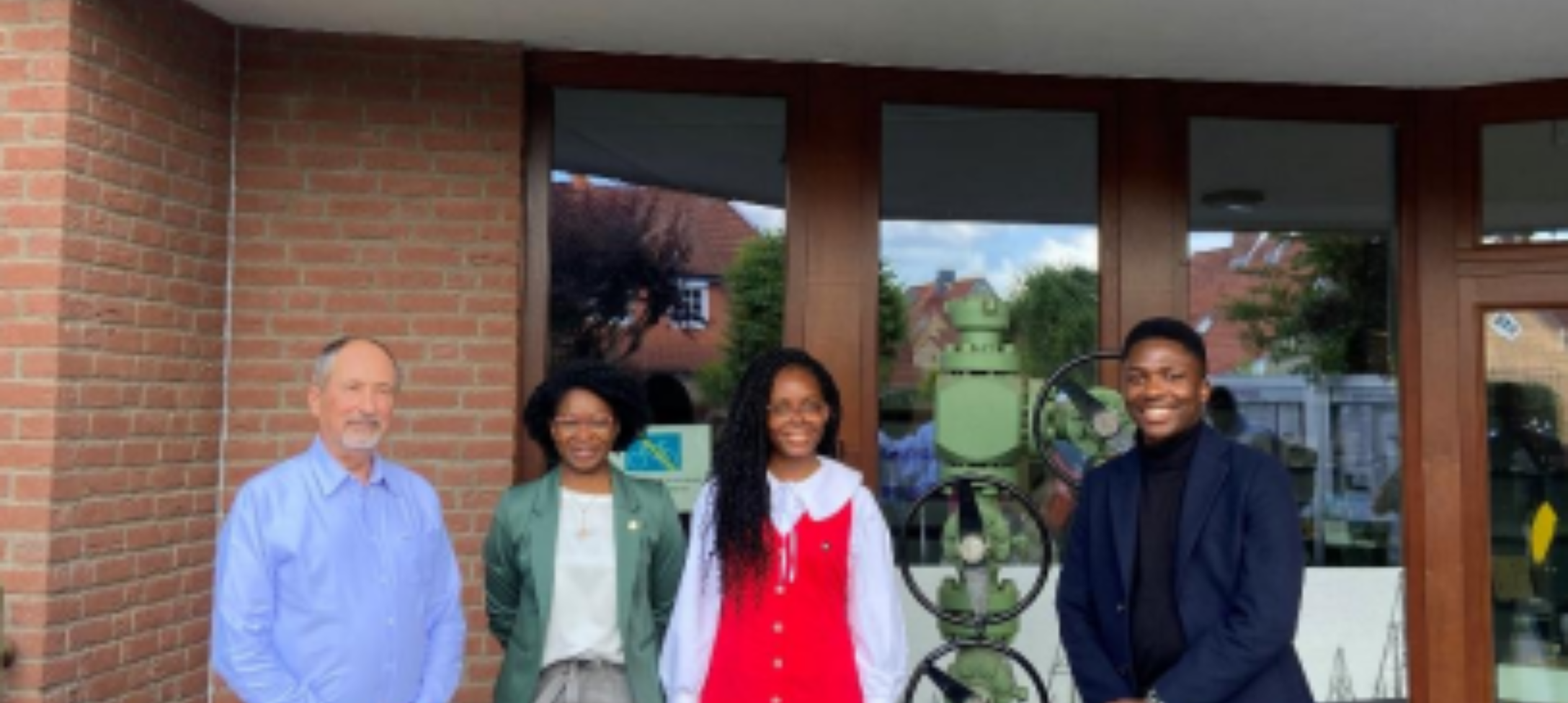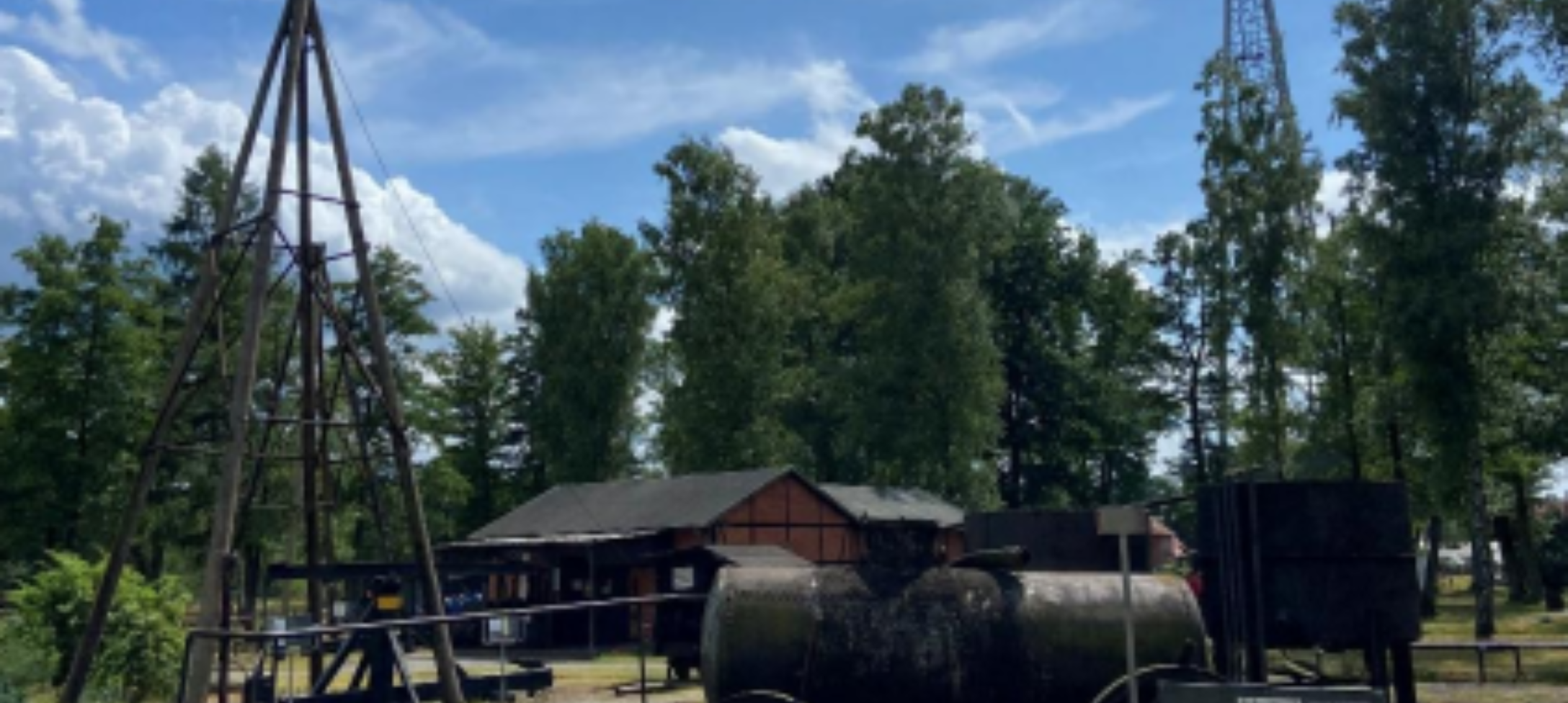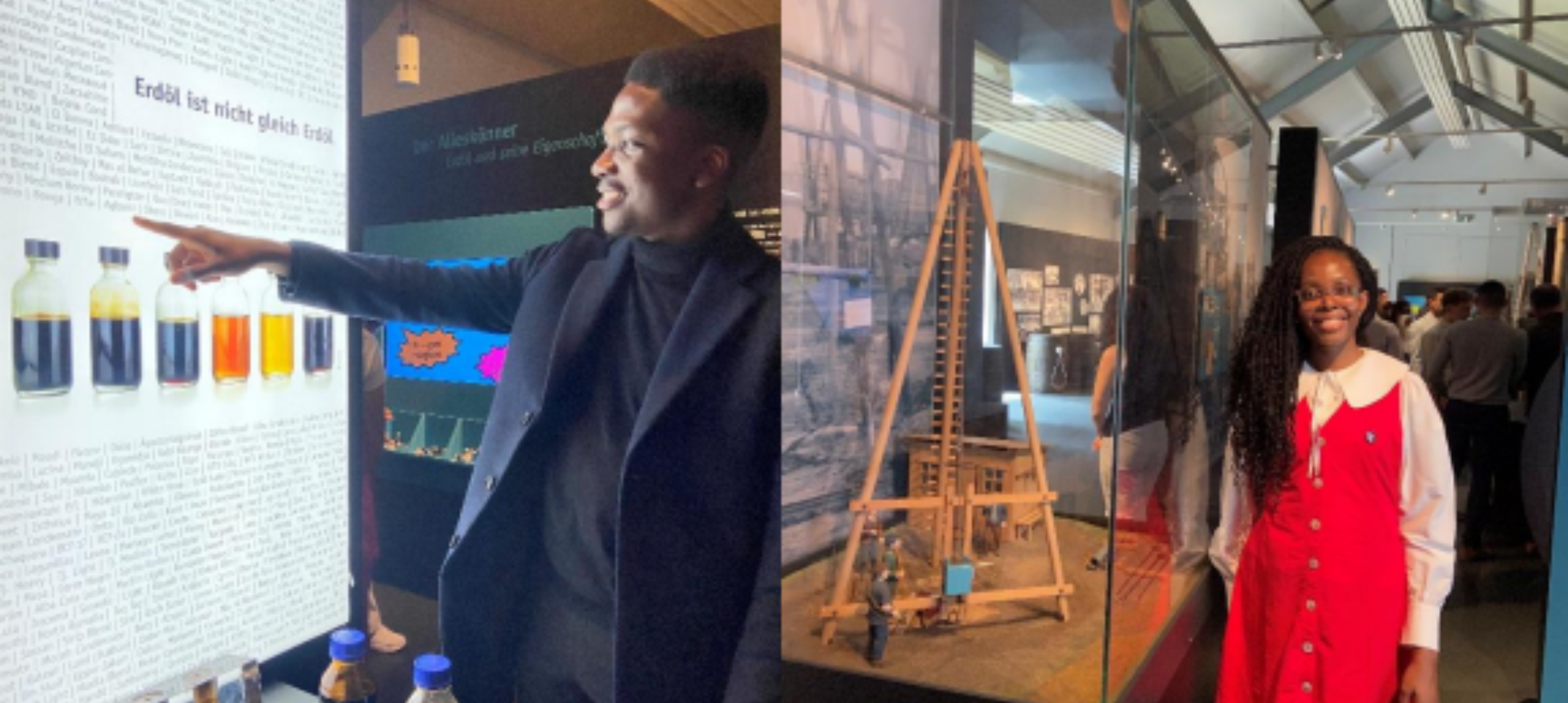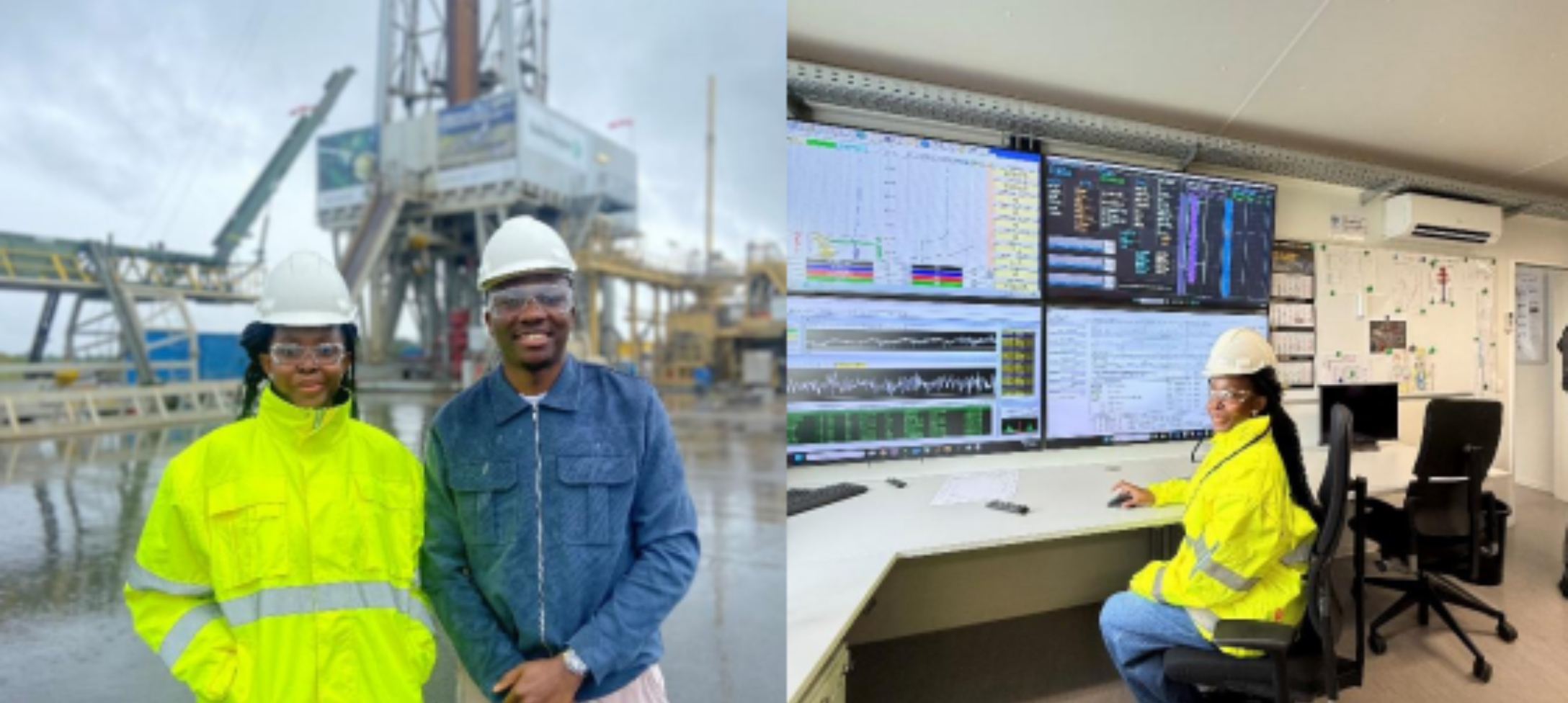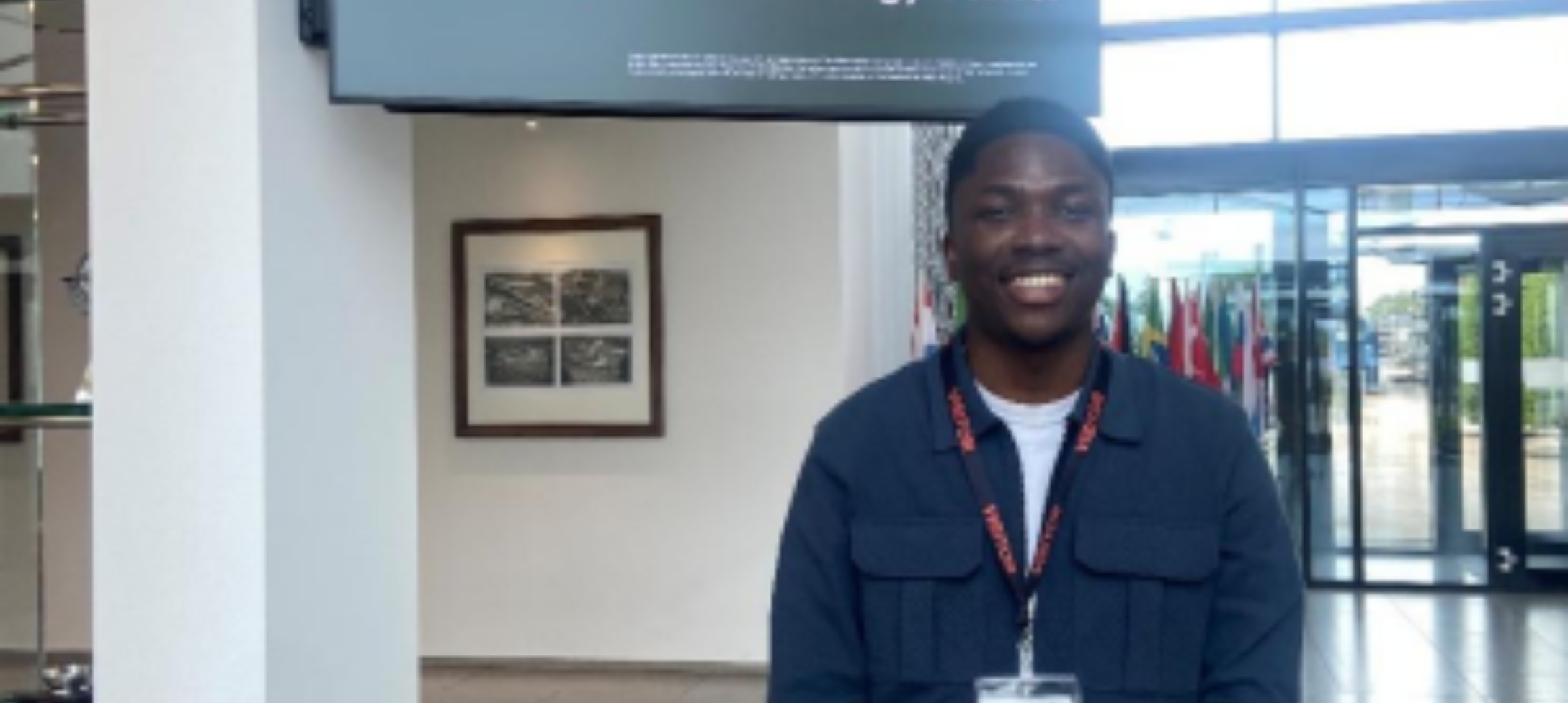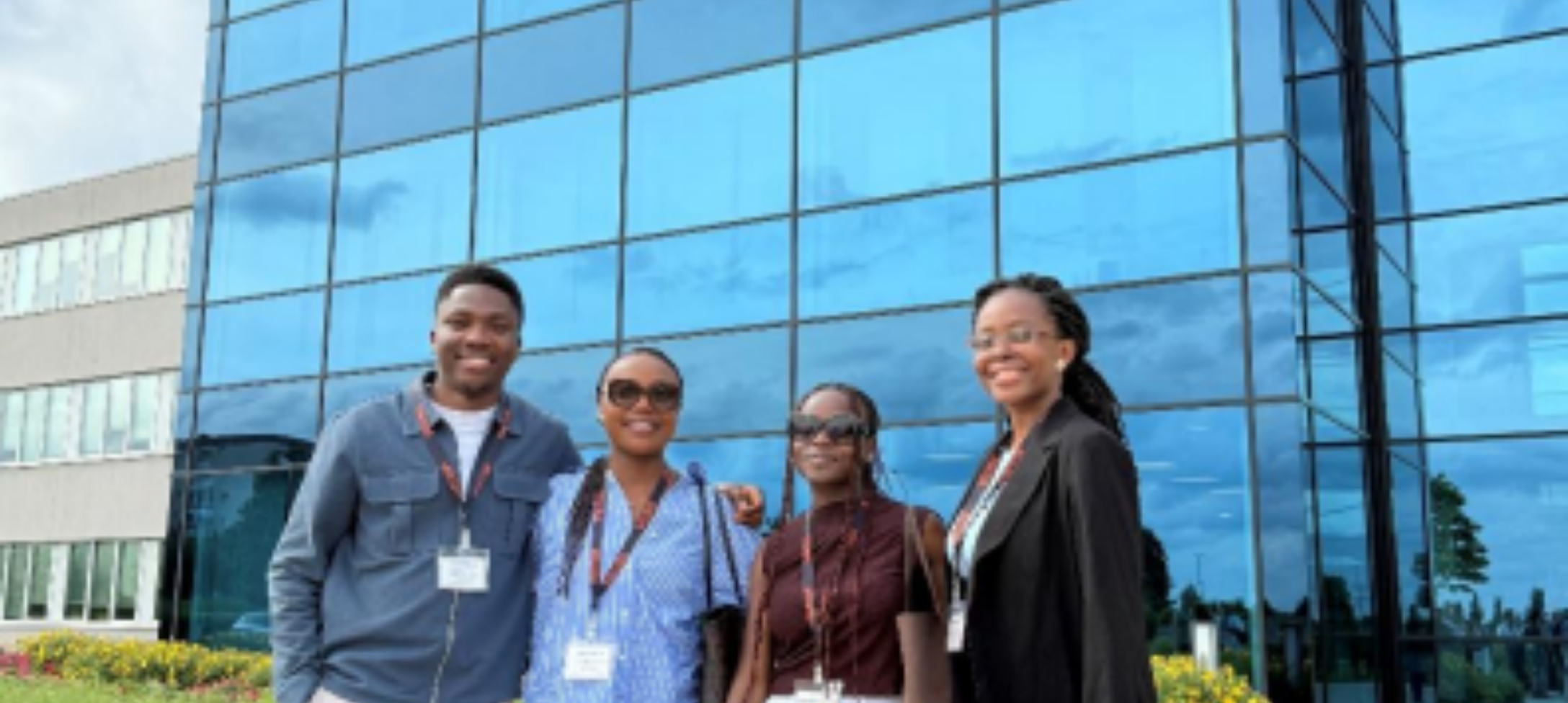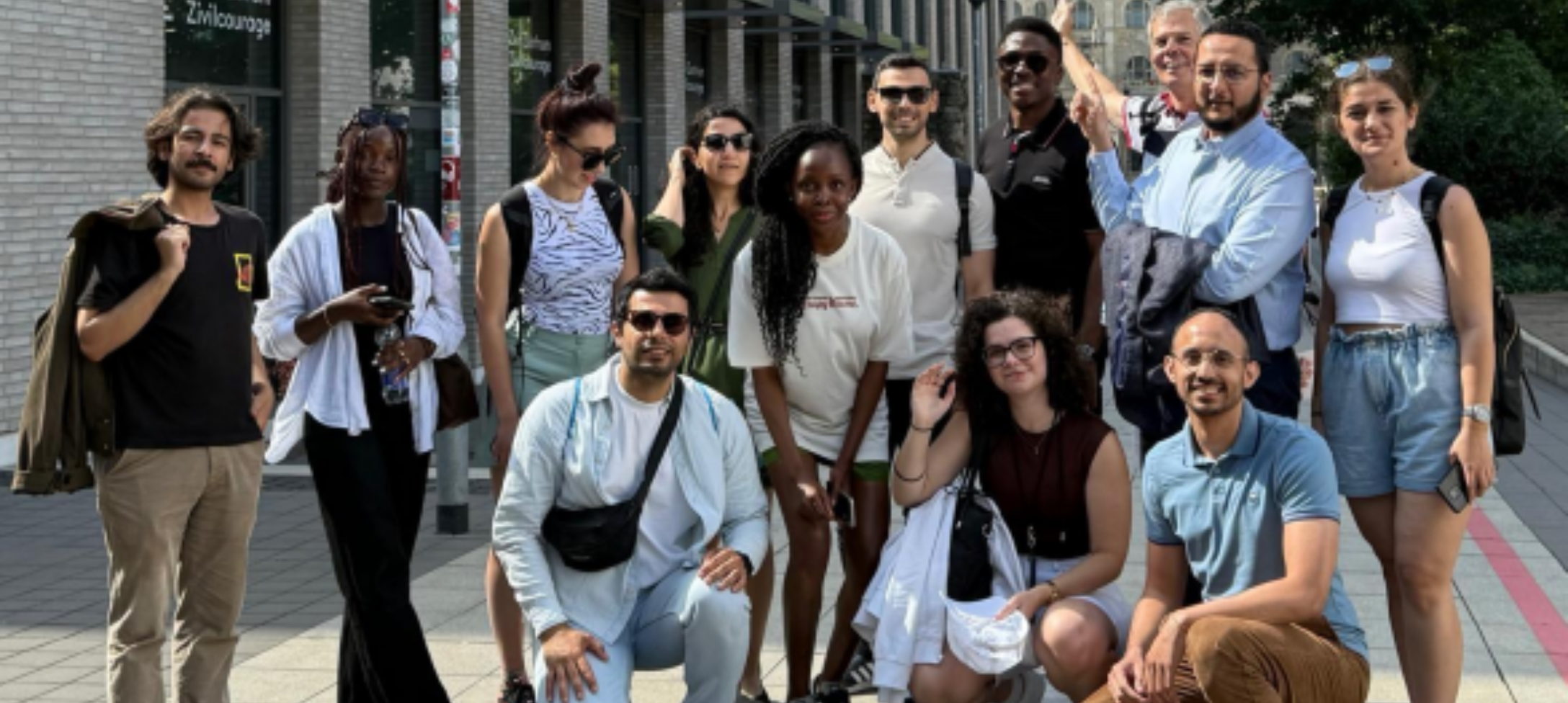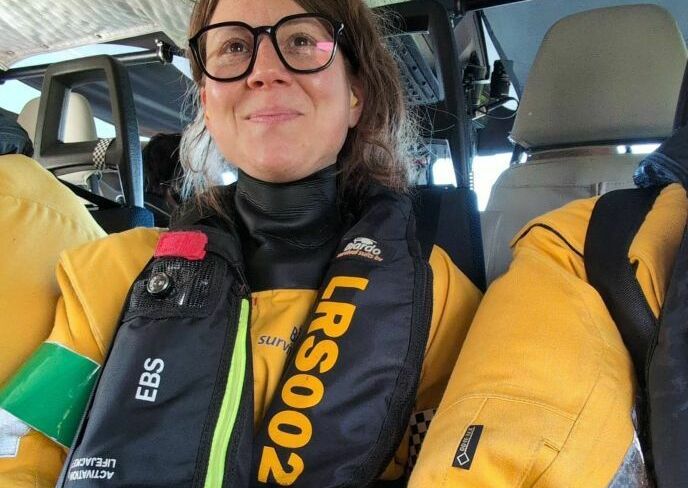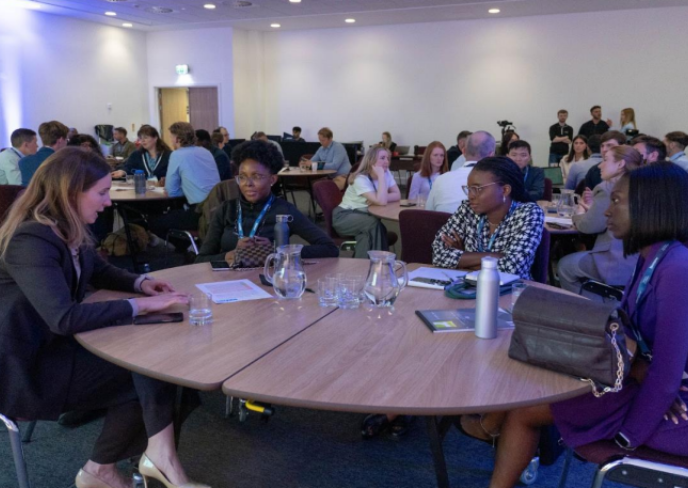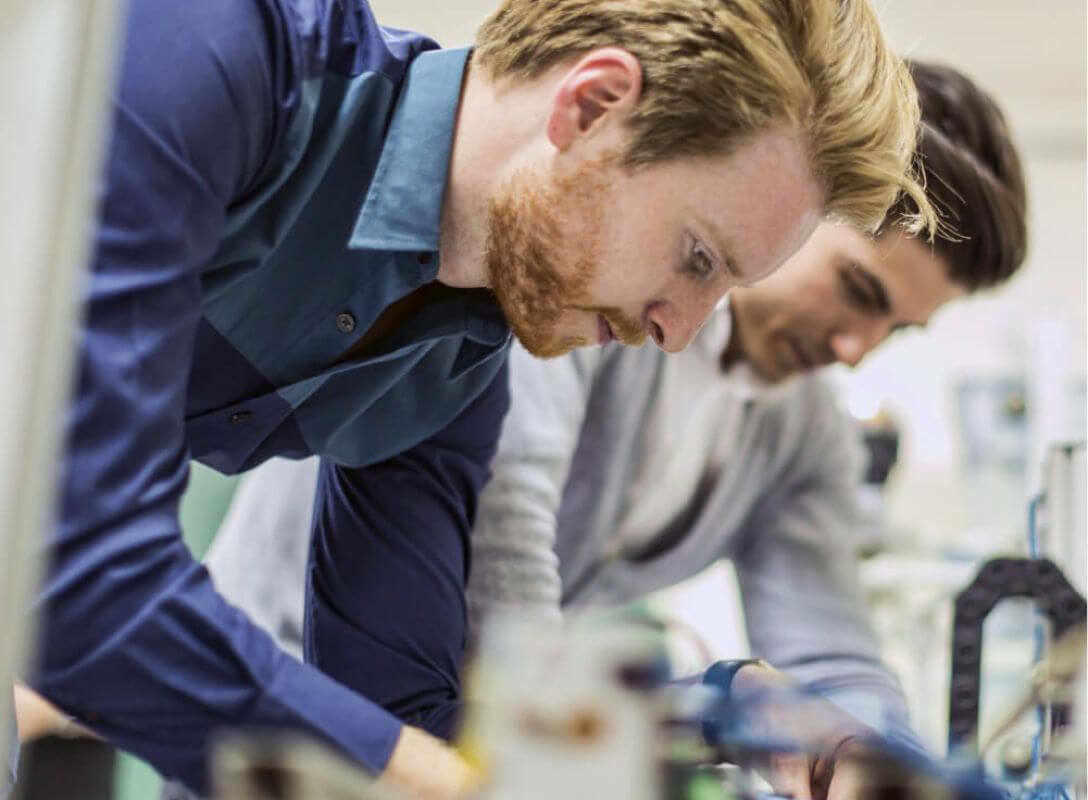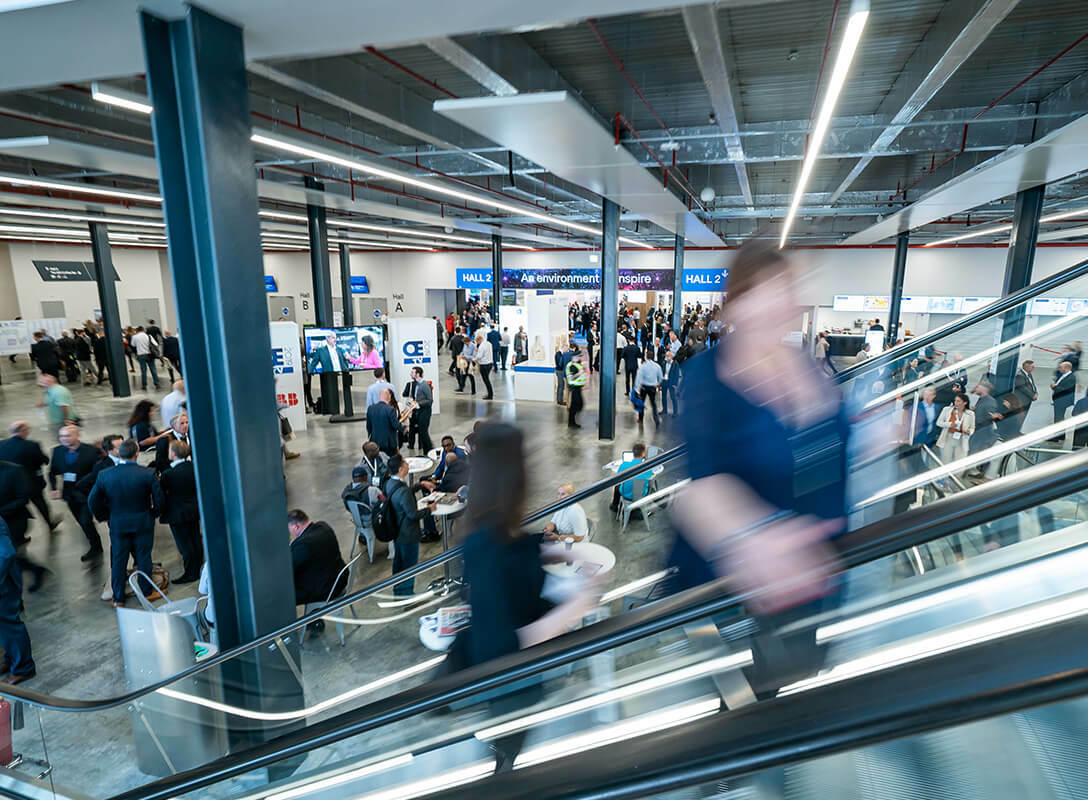YP Beyond The Borders in Hanover, Germany
August 2025
SPE ABERDEEN YOUNG PROFESSIONALS GERALD IHEDILIONYE AND AMARACHI AGIRI GIVE THEIR COMPREHENSIVE REPORT INTO A VERY SUCCESSFUL AND ENRICHING YP 'BEYOND THE BORDERS' EXPERIENCE IN HANOVER, GERMANY.
See the Gallery at the bottom of the page for more images from the event.
The SPE Europe Beyond the Borders (BTB) event held from the 25th to 28th June 2025 at the beautiful city of Hannover, Germany, was a fantastic gathering of brilliant and diverse Young Professionals and industry experts brought together by the SPE Germany Section Young Professionals Committee. Attending the Beyond the Borders event was an energizing experience, uniting young professionals and ambassadors from nine European sections for three transformative days. Representing the SPE Aberdeen Section Young Professionals alongside Amarachi Agiri, we witnessed firsthand the power of collaboration, innovation, and shared vision in shaping the future of energy.
Over three days, we listened to industry presentations and insights into the German and European energy market, thought-provoking speeches on the future of the energy industry and the role of young professionals, technological advancements and Artificial Intelligence in the industry, and an outlook of the Geothermal Energy industry in Germany. We engaged in round-table discussions and networking sessions, exchanging insights on our career journeys and brainstorming on ways to contribute towards driving the energy industry forward. And not forgetting, we made out time to explore the beautiful city of Hannover, and share laughs over the cuisines and liquor of the Germans.
DAY 1 – BVEG OFFICE, HANOVER
On the 25th June 2025, just after arriving the beautiful city of Hannover, Germany, the 28 BTB ambassadors gathered at the office of the BVEG (German Association of Gas, Oil and Geo-Energy Companies), an association representing the interests of 80+ companies from Germany and Austria. We were warmly received by the BVEG representative, Ingo Forstner, the Society of Petroleum Engineers (SPE) International President, Olivier Houze, and the Young Professionals Chair of the SPE German Section, Rasoul Faroutan. The day’s proceedings kicked off at about 5pm with a presentation from Ingo Forstner titled “The German Market – The BVEG view”. He began by giving an overview of the BVEG, its functions, interests and role in policy making and industry standards development in Germany. The BVEG is the only lobbying association for Exploration and Production in Germany. It represents the interests of mining companies involved in Oil and Gas, Hydrogen, Geothermal, Lithium/Helium, and Carbon Management.
Ingo discussed the growing markets for underground gas/hydrogen storage and geothermal energy in Germany and focused on the potential as well as challenges being encountered in the country’s geothermal business. While Germany has proven hot-aquifers in its sedimentary basins, significant amount of exploration work is still required. He also stressed other challenges including lack of fully developed industry standards and guidelines, limited funding available for geothermal companies (primarily government backed), the high risk of failure and bankruptcy associated with exploration for the small sized geothermal companies, the excessive costs and low ROI for geothermal energy production and transport to urban centres. He expressed concern over the declining state of the oil and gas industry in the country highlighting the shutdown or country exit of production and service companies while also noting that indigenous oil and gas production are only a mere 2% and 5% of national consumption, respectively. However, strides continue to be made in geothermal and more recently, lithium mining, both of which can be developed simultaneously.
Following the presentation, we began an introduction session for all present sections and BTB ambassadors. We began in alphabetical order starting with an introduction from the Aberdeen Section. It was a great opportunity to showcase the events and activities of the Young Professionals of Aberdeen and the larger section, as well as highlight the strong volunteering spirit and excellence of our members. There were also interesting presentations from 8 other sections present at the event.
Finally, there was a presentation from the German Section on what the Beyond the Borders was all about as well as all activities we will be embarking on in the following 3 days.
DAY 2 – GERMAN OIL MUSEUM, WIETZE
On the 26th June, 2025, we travelled down the beautiful German highways from the Hannover city centre to the German Oil Museum in Wietze where the day’s activities were to be held. Wietze is a small town north east of Hannover, with a rich oil history and is most notable for its position as the birthplace of the German oil industry. Interestingly, this oil museum is powered by 10 geothermal wells drilled to a depth of 80m, a reflection of Germany’s ongoing transition from oil to geothermal energy.
We began with an SPE Germany Opening Speech delivered by Edna Michelle Bisso Mba, the current SPE Germany Section Chair. Edna gave an introduction of the SPE Germany section and an overview of its leadership, membership, activities, student chapters and many more. Among the recent milestones mentioned, it was great to know that the section had just clocked 35 years since inception, an impressive feat indeed.
Following Edna’s presentation, we had the honour of receiving a Keynote Address from the SPE International President, Olivier Houze. Olivier’s speech was titled “SPE Update to Members on Energy Transition, Membership & GenAI”, and just as the title states, his speech centred around the following:
• energy transition and the role of SPE in ensuring a just transition.
• current SPE membership trends across different demographics, as well as accompanying challenges and opportunities.
• Artificial Intelligence in the energy industry and SPE’s strategic investment into GenAI for the benefit of its members.
Olivier began by speaking about the current state of the energy industry, the energy transition and the varying interests across nations and continents on this subject. He highlighted that while the energy transition must happen, it must be done with a forward thinking approach and it cannot be successfully achieved without the expertise, technology and financial investments from the oil and gas industry. He mentioned that the oil and gas industry will continue to remain relevant and a key player in the energy transition for many more years to come, and the young professionals of today will be the key drivers in this journey. Olivier spoke about previous historical energy transitions, explaining that these transitions have not been about substituting energy sources, but rather aggregating them, hence why energy sources like coal still contribute to the energy mix of today. He further mentioned an interesting fact stating that the only energy source that had ever been fully replaced following a transition was Whale Oil (replaced by the significantly cheaper Kerosene). Olivier spoke about SPE’s contribution to the energy transition, stating that while the society does not lobby governments and policies, it will continue to provide the required technical guidance and expertise required for this delicate transition.
The second point of discussion centered around the changing demographic contributions towards SPE’s membership numbers, highlighting dwindling professional membership in Europe and US regions, which is opposite to the increasing professional membership, particularly of Young Professionals, in the MENA and African regions. He mentioned SPE’s increasing focus in the MENA and African regions and the pivotal role these regions will play in both the society and energy industry’s future.
Finally, he gave an overview of the increasing impact of Artificial Intelligence in the energy industry and its huge benefits towards technological innovation and creativity for the industry. To leverage AI for the benefit of its members, SPE invested in the ongoing development of an Energy LLM (large language model) similar to the likes of ChatGPT and so on. Funded by Aramco and developed by i2k Connect, the Energy LLM will serve as a productivity tool and will ensure the democratization and accessibility of vetted high-quality industry knowledge for its members. The Energy LLM will be of 2 models, the first trained using 8 billion parameters and the second using 70 billion parameters. The models will be trained on high-quality technical content from OnePetro (owned by SPE) and the LLM will be able to provide references to these papers when answering question prompts, for the user’s own validation or further detailed study. The latter (references for further study) will mitigate the risk of increased dependence on the LLM as an alternative for primary mental knowledge, especially for young professionals.
Following Olivier’s insightful and thought-provoking address, we welcomed Martin Luling, one of the pioneer engineers of the SLB team that developed the first resistivity tool and also a part of the team that invented the art of Geosteering in Directional Drilling. Martin delivered his first presentation of the day titled: “Azerbaijan Oil History”, in which he gave a historical account of the early exploration, extraction and refining of oil in the 18th century and its evolution to the modern oil and gas business in the 19th century which began with the drilling of the first oil well in Absheron, Azerbaijan. It was a 21 m deep oil well drilled by Major Alekseyev in 1846. He also described subsequent technological and business developments in the region including the significant investment by the Nobel Brothers in the development of several oil fields in 1875, the first oil crisis due to over-production in 1876, the first use of deep pumps in the same year, the construction of the first oil tanker for transport to Russia a year later, and the oil investments of the Rothschild brothers in 1883.
Thereafter, we listened to a presentation from Niklas Romanowski, a member of the SPE Germany YP committee organizing the BTB event. His presentation titled “Potential of Non-Metallics in Well Construction” introduced us to the main material currently used in well construction, steel and cement, and the current challenges faced with these materials including steel corrosion and cement degradation. He spoke about the benefits of composite materials (with a focus on carbon fiber) in the fabrication of well components such as production tubing, the advancement in research on such materials and the economic potential to be accessed by the industry through the adoption of such materials. We then rounded up the morning’s session of activities and proceeded to have lunch and network with fellow attendees.
After lunch, we returned to Martin Luling’s 2nd presentation of the day. His presentation titled: “U.S.A Oil Production in the 19th and 20th Century” was a historical account of the evolution of the oil and gas business in this part of the world, starting with the drilling of the first USA oil well in 1859 by the famous Col. Edwin L. Drake in Titusville, Pennsylvania. He spoke about the monopoly of the global oil and gas industry by John D. Rockefeller’s Standard Oil and his brutal business tactics of stifling out competitors in his quest to control the oil market. He also described the split up of Standard Oil into the Seven Sisters, following the USA government intervention after several public complaints from competitors and journalistic investigations into the company’s unethical practices by Ida Tarbell. The Seven Sisters was the collective name given to the seven companies birthed from the split of Standard Oil, some of these companies still existing today as powerhouses in the oil and gas industry, including Exxon Mobil, Chevron and British Petroleum (BP). He also spoke about the emergence of competitors and their contributions to the oil and gas market, most notably Royal Dutch Shell Oil, formed from the merger of Henri Deterding’s Royal Dutch Oil and Marcus Samuel’s Shell Transport.
Following Martin’s second and final presentation, we embarked on a tour around the Wietze Oil Museum. The museum is home to a number of important artefacts from the historical evolution of the oil and gas industry in Germany and globally. Some of the interesting artefacts we saw were some of the popular oil blends from around the world, ancient tools and technologies utilized for oil extraction and refining, dug oil pits which were very common in Wietze a long time ago, and old oil rigs and oil pumps used for the drilling and production of oil in the old days.
The day’s activities ended with a few other presentations from speakers around topics such as the geothermal business in Germany and the activities of the SPE Gaia Section. We also engaged in group round-table discussions on our careers so far and our preferences/reservations towards Working Abroad, Working in Operations and Being Brave in the oil industry. Following the discussions, a member of each group presented the group’s points for and against each of the three discussion areas. While there were diverse opinions towards preferences to working locally vs working abroad, everyone agreed on the importance of working in operations, even for a very short period, as it has a strong positive impact on career and technical development. We also emphasized the importance of being brave as young professionals, particularly in today’s transition were a lot of the status quo will be challenged and new frontiers opened for young people to lead, while there also continues to be an increase in the demand for innovation and AI/technology adoption and integration.
DAY 3 – BAKER HUGHES, CELLE
On the 27th June, 2025, we travelled down to the town of Celle to visit the impressive B-eta test rig owned by Baker Hughes. We were welcomed by the Drilling Supervisor and given a presentation about the rig, its operations and significance in Baker Hughes’ global technology development and service delivery. The B-eta test rig is a drilling rig owned by Baker Hughes and was previously used in land drilling for production companies in Germany. The rig was then moved to Celle where it now specifically used as a test rig for testing drilling technology, equipment and materials developed by Baker Hughes or other companies in need of this service. The testing done on the rig covers the following areas:
▪ Directional Drilling.
▪ Bit & Coring.
▪ LWD evaluation.
▪ Mud and Loss Circulation Materials (LCM)
▪ Digital Solutions and Automation
▪ Geothermal Applications
▪ Rig and Surface Equipment.
The rig is key to Baker Hughes’ global operations due to its location and proximity to the Baker Hughes’ Celle Technology Center (CTC), its headquarters for Drilling Services housing research and development labs as well as manufacturing and assembly plants for most of its drilling and logging equipment. Due to the close proximity, newly developed drilling tools/technology and equipment developed at CTC can be easily transported and tested at the B-eta rig, eliminating logistics complexities and significantly improving delivery time for new equipment or turnaround time for repaired equipment. At the time of visit, we were informed that the rig had just successfully drilled the first geothermal well in Lower Saxony, Germany, using Baker Hughes’ AutoTrak Rotary Steerable System and Vulcanix Geothermal drill bit, and carried out a reservoir deliverability test using the Baker Hughes Electrical Submersible Pump. It was also in the process of testing newly installed drilling rig automation systems. Following the interesting introduction, we were taken on an exciting floor around the rig, from the drill floor and well slots, to the mud equipment housing, drill pipe rack, storage tanks, mixing skids and finally to the Driller Shack. We were shown the various drilling and automation systems and given an overview on how they work. We also saw the finely stored cores extracted from the various formations beneath the rig. After a few pictures, we departed for the Celle Technology Center.
At the technology center, we were warmly welcomed by Sven Haberer, the SPE Germany Section Program Chair and a Systems Engineer at Baker Hughes CTC. He gave us a captivating presentation on the history of CTC, its operations and its significance in the German and global oil industry, highlighting the rich list of oil and gas drilling innovations that have come out of the center. From developing the gamma ray and resistivity tools, to the first ever automated steering systems in the 1980s, the center has produced 2600 granted patents and hundreds of technological innovations and equipment which have revolutionized drilling across the globe till date. Home to over 1,200 employees and sitting on 50-acres of land, the center is responsible for developing tools in the following product lines:
▪ Drilling Services.
▪ Completions
▪ Artificial Lift
▪ Drill Bits
▪ Enterprise Technology
After the presentation, we were taken on a tour around the complex. We firstly visited the R&D, Product and Project Management offices, and were talked through the Product/Project Management processes for new tools or services. We saw the R&D labs were the innovation happens, and the prototypes are firstly designed and tested using 3-D printing and testing equipment. We were then taken to the manufacturing, assembly and QA/QC line for the high-grade electronic chips that are installed in most of the drilling equipment. We then moved on to the manufacturing and assembly plant for the rotary steerable systems, logging while drilling (LWD) tools, measurement while drilling (MWD) tools, bottomhole assembly (BHA) and so on. We were given an overview of how these equipment are manufactured, assembled, tested in regulated chambers using bottomhole conditions and assessed against equipment standards. We also saw the fabrication plant where the precision cutting of steel (for the assembly of the drilling equipment) is done and the high level of detail and perfection required, with achieved tolerances in micrometers.
Finally, we were taken to the storage site where the equipment are stored in crates, final product checks are done, security clearances and logistic arrangements are made and the products are shipped to their destinations across the globe. We then took pictures with the company representatives and headed back to Hannover for a fun night out in the city center.
DAY 4 - A TOUR OF HANOVER
On the final day, we had the pleasure of embarking on a tour around the city center and its landmarks. We were fortunate to have a fantastic tour guide who took us round the city center, describing the different landmarks and their historical significance. These landmarks included:
▪ Hannover Central Train Station.
▪ The monument of Ernest August, King of Hannover.
▪ The monument of Gottfried Leibniz, the famous mathematician.
▪ Hannover State Opera House.
▪ Hannover Central Square, called Kropcke.
▪ The ruins of the Aegidien Church.
▪ The New Town Hall, the tallest building in Hannover.
▪ Hannover Museum.
▪ State Parliament Building.
▪ The Old Town and many more.
After a beautiful day filled with laughter, poses and pictures, we said our goodbyes and departed from the beautiful city of Hannover, Germany.

